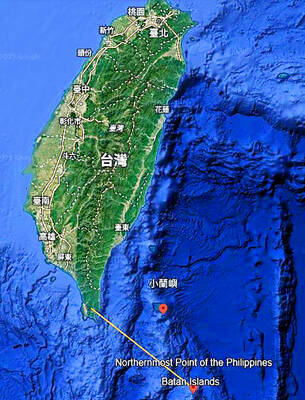The desperate plight of Britain's rail industry was exposed on Friday when the government confirmed that it will have to pay at least Euro $3.5 billion (US$5 billion) to the administrators of the failed Railtrack company up to April next year just to keep the national network operating.
Government sources said that the administrators had found "a huge black hole" in Railtrack's finances that will have to be plugged by the taxpayer.
The crisis is so great that the ultimate cost could be even greater than US$5 billion because the administrators, Ernst & Young, have not worked out the final figure.
The position should become clearer when the administrators present their first report to Stephen Byers, the transport secretary, next month. It has been delayed because Ernst & Young discovered a vast and complicated state of affairs within the bankrupt company which it is still trying to unravel.
The extraordinarily dire state of Railtrack's financial position has alarmed senior civil servants at the Department of Transport.
The administrators were given US$3 billion when they were first called in by Byers on Oct. 7. Since then the figure needed has risen by another US$2 billion.
The Department of Transport said last night: "These are early days. The administrators are continuing to carry out their investigation. We are waiting for their official report which will be made public."
Ministers are hoping that they will be able to recoup some of the US$5 billion from Railtrack's assets. But apart from its property portfolio, the company's assets are likely to be minimal and a large part of the bill will have to come from the taxpayer.
The government has already taken steps to alert the European commission that it has been forced to bail out the private company -- a move that would normally be against EU rules -- or face the collapse of Britain's railway network.
The government's action shows that it is determined to keep the railways operating with considerable amounts of public money. But last night's revelations also expose the poor state of the rail network and the amount of money that is necessary to revive the industry.
Byers' plan to place Railtrack into administration has been widely welcomed in spite of the attempt by Railtrack and the City to use the plight of shareholders to attack him. But the transport secretary still has to convince his critics that his plan to replace Railtrack with a not-for-profit company will work.
Railtrack challenged the government's US$5 billion figure -- saying that it did not recognize it. A Railtrack spokesman said: "Our position has been clear to the market for almost a year. The facts are now being spun to justify placing us in a bad position."
But during Mr Byers' lengthy talks with John Robinson, the Railtrack chairman, from July onwards, Railtrack made it clear that it was seeking an extra US$2.4 billion until the end of the financial year.
It was this demand that made Byers finally decide to pull the plug. He stressed that he could not justify throwing more taxpayers' money at a lost cause.
This admission of the significant drain on the public purse is extremely worrying for ministers. While it shows that the government stands ready to support the industry, it also shows that it may have to take the blame if anything goes wrong, such as another major rail crash.
Byers is still some way off taking his next step towards reshaping the industry with his not-for-profit company, and the administrators' timetable for winding up Railtrack is lengthening day by day.
Byers' original plan was that their work would be completed within three to six months, but privately Ernst & Young say that their mission may take up to a year.
Byers is strongly resisting the proposal that he will have to agree to hand on Railtrack to a private company after all.
But he has been advised by the administrators that he may have to consider this option seriously if they receive an attractive bid.

SECURITY: As China is ‘reshaping’ Hong Kong’s population, Taiwan must raise the eligibility threshold for applications from Hong Kongers, Chiu Chui-cheng said When Hong Kong and Macau citizens apply for residency in Taiwan, it would be under a new category that includes a “national security observation period,” Mainland Affairs Council (MAC) Minister Chiu Chui-cheng (邱垂正) said yesterday. President William Lai (賴清德) on March 13 announced 17 strategies to counter China’s aggression toward Taiwan, including incorporating national security considerations into the review process for residency applications from Hong Kong and Macau citizens. The situation in Hong Kong is constantly changing, Chiu said to media yesterday on the sidelines of the Taipei Technology Run hosted by the Taipei Neihu Technology Park Development Association. With

CARROT AND STICK: While unrelenting in its military threats, China attracted nearly 40,000 Taiwanese to over 400 business events last year Nearly 40,000 Taiwanese last year joined industry events in China, such as conferences and trade fairs, supported by the Chinese government, a study showed yesterday, as Beijing ramps up a charm offensive toward Taipei alongside military pressure. China has long taken a carrot-and-stick approach to Taiwan, threatening it with the prospect of military action while reaching out to those it believes are amenable to Beijing’s point of view. Taiwanese security officials are wary of what they see as Beijing’s influence campaigns to sway public opinion after Taipei and Beijing gradually resumed travel links halted by the COVID-19 pandemic, but the scale of

A US Marine Corps regiment equipped with Naval Strike Missiles (NSM) is set to participate in the upcoming Balikatan 25 exercise in the Luzon Strait, marking the system’s first-ever deployment in the Philippines. US and Philippine officials have separately confirmed that the Navy Marine Expeditionary Ship Interdiction System (NMESIS) — the mobile launch platform for the Naval Strike Missile — would take part in the joint exercise. The missiles are being deployed to “a strategic first island chain chokepoint” in the waters between Taiwan proper and the Philippines, US-based Naval News reported. “The Luzon Strait and Bashi Channel represent a critical access

Pope Francis is be laid to rest on Saturday after lying in state for three days in St Peter’s Basilica, where the faithful are expected to flock to pay their respects to history’s first Latin American pontiff. The cardinals met yesterday in the Vatican’s synod hall to chart the next steps before a conclave begins to choose Francis’ successor, as condolences poured in from around the world. According to current norms, the conclave must begin between May 5 and 10. The cardinals set the funeral for Saturday at 10am in St Peter’s Square, to be celebrated by the dean of the College